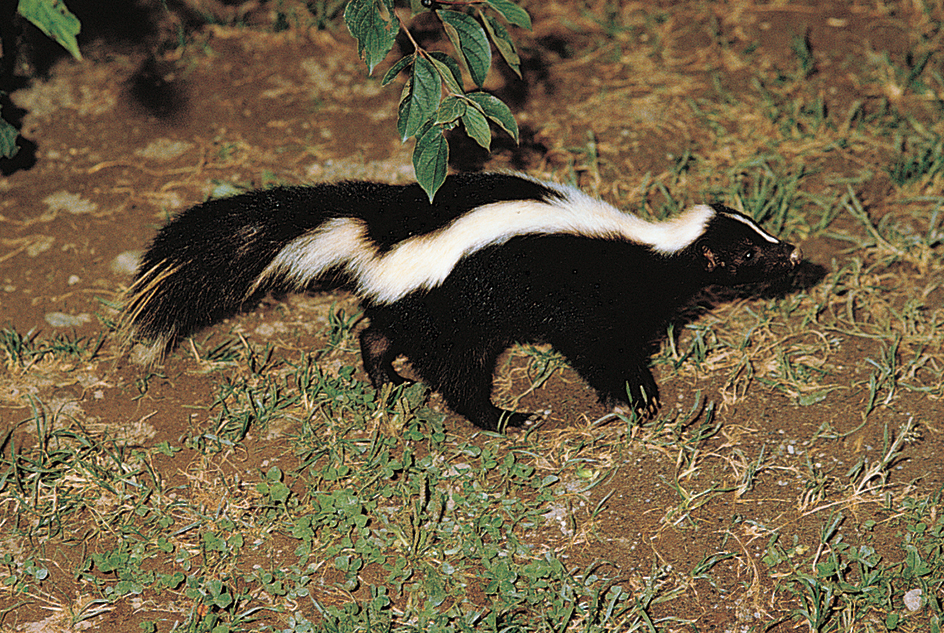Skunk is any of a group of small furry animals with distinctive black and white markings. Skunks are known for the foul-smelling liquid they spray when frightened or in danger. The odor remains for days on whatever has been sprayed.
The sprayed liquid, called musk, comes from a pair of glands near the base of the skunk’s tail. The animal can spray accurately as far as 12 feet (4 meters). Before it sprays, it gives warning by stamping its front feet and by hissing or growling. There are three main types of skunks: (1) striped, (2) hog-nosed, and (3) spotted.
The striped skunk has two white stripes that form a large V down its back. White fur covers the top of its head, and a thin white stripe runs down the center of its face. Most striped skunks grow from 13 to 18 inches (33 to 46 centimeters) long, not including the tail, and weigh from 3 to 10 pounds (1.4 to 4.5 kilograms). The striped skunk is the most common species in the United States. It also lives in Canada and in northern Mexico.

The hog-nosed skunk resembles the striped skunk. But the hog-nosed skunk has a bare, protruding snout and lacks a face stripe. Some of these skunks have an entirely white back and tail. Most hog-nosed skunks grow from 14 to 19 inches (36 to 48 centimeters) long and weigh from 4 to 10 pounds (1.8 to 4.5 kilograms). Hog-nosed skunks are the only skunks found in South America. They also live in Central America and in the Southwestern United States.
The spotted skunk has large white blotches all over its body. A triangular patch of white marks the forehead. Spotted skunks grow from 7 to 14 inches (18 to 36 centimeters) long and weigh from 1 to 3 pounds (0.5 to 1.4 kilograms). They live in the United States and as far south as Central America.
Many skunks live in underground dens that they line with dry leaves. The spotted skunk, unlike the striped and hog-nosed species, can climb, and it sometimes lives in hollow trees. Skunks are active at night and sleep during the day. Most female skunks give birth to four or five young at a time.
Skunks eat caterpillars and such insects as beetles, crickets, and grasshoppers. They also eat mice, rats, and other small rodents. Sometimes they eat eggs, fruit, grain, and the rotting flesh of dead animals. Skunks have few natural predators, though bobcats and great horned owls have been known to attack them.
See also Polecat.
